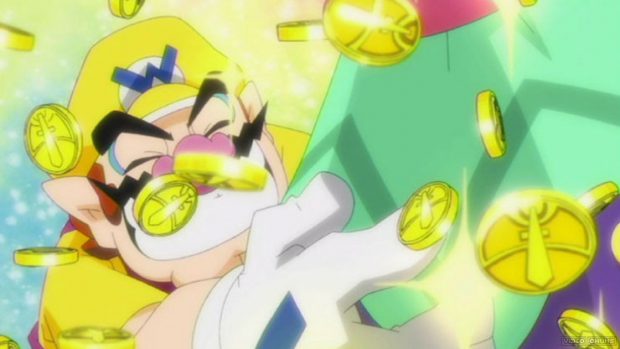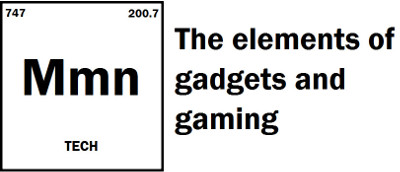

16-bit prices are a straw man for $70 games
Nintendo recently kicked a hornets’ nest when they announced upcoming Zelda title Tears of the Kingdom would be retailing for $70 USD. Some fans expressed anger online, stating the game looked little more than an asset flip of Breath of the Wild. Others brought up, correctly, that raising game prices, during a time when many people are feeling an economic pinch, seemed miserly. Others though have been defending the practice. Notably bringing up how much games cost in the 16-bit era versus today’s prices. Which would be fair it it were an apples to apples comparison. However, it doesn’t take into account into the reality of modern game publishing, especially when it comes to distribution.
If you were a gamer at the time, or just go back through some old flyers and catalogues, it’s true that games were really expensive back in the 8 and 16-bit eras. Like this JC Penny catalogue from 1994, that has Super Street Fighter 2 listed for $70 USD on both the SNES and Genesis. In fact, most new releases hovered around that $60-$70 mark, which adjusted for inflation equates to an eye watering $120-$140 in today’s greenbacks.
Yet what people seem to forget is that games at the time came almost exclusively on cartridges. And these huge plastic bricks had a little more going on inside than the tiny, easily lost ones that Nintendo has been using since the DS.
Modern cartridges work in much the same way any external flash drive does. The operating system treats it as a storage drive, then fetches data from it based on what the program calls for. The console’s hardware doesn’t have direct access to the cartridge, or vice versa. Old school systems are a bit different though. These are very primitive by today’s standards. They don’t have an operating system per se. Maybe a few lines of code to get them booted and run an error if no game is inserted. Instead, the cartridge interfaces directly with the system’s hardware. Essentially acting as an extension to its built-in memory, with direct access to the CPU. You hear a lot of modern devs talking about getting close to the metal. Well, this is as close to the metal as you can get.
Now, there’s a lot of cool stuff you can do with this. Since the cartridge essentially functions like an expansion card in a PC, you could use it to add accelerator chips. Such as the Super FX, which allowed the SNES to render polygonal graphics when it otherwise couldn’t. Furthermore, since carts had direct access to system memory, and ran at the same bus speed, you could also transfer data instantly. Which is why games of this era had no load times. Arguably this is a rare example of past technology actually being better than what we have today. But all of this came at a cost.
The physical chips games were stored on were expensive. Much like high speed storage is still very pricey today. Even the fastest flash drivers are still a lot cheaper and slower than a RAM chip with similar capacity. And old school ROM has a lot more common with RAM than it does flash.
This high cost encouraged developers to keep their games as small as possible. The original Super Mario Bros. was only 33KB in size for example, which included all its sprite graphics and program code. Game sizes would increase over time as ROM chip prices got more manageable. But very large games, especially JRPGs, could cost consumers over $100, which limited them to a smaller markets of potential customers. Due to the high prices, most people turned to renting from a video store rather than buying outright. Since most games could be beaten in a couple of days, this made sense. But for publishers, it meant that fewer people were giving them money. So the industry was quick to begin exploring alternative solutions.
One idea was to move to magnetic storage. While some contemporary home computers did use cartridges, cassette tapes and floppy media quickly became the preferred way to distribute software. They were a lot cheaper to manufacture than PCBs, so games didn’t cost as much. 1990’s Monkey Island joked the players should “never pay more than 20 bucks for a computer game.” And, well, that’s how much a lot of those games cost back then.
Nintendo would choose to adopt the magnetic format with their Famicom Disk System. The support chips included on many cartridges were moved to this new expansion, and games instead would be retailed on proprietary floppy disks that could hold up to 112KB. Much more than the 40KB cartridges that were typical at the time. Japanese gamers could also buy blank media for ¥2000 and have new games written to then for ¥500 at special kiosks. Substantially less than what cartridges cost.
The Disk System was an extra purchase though, retailing for ¥15000 ($80) in addition to the cost of the Famicom. It also came with load times, which were not an issue on cartridges. However, given Japan’s relative lack of a rental market, the lower cost proved to be a hit with consumers, with the FDS moving 4.4 million units over the course of its lifetime. Meaning that nearly one quarter of all Japanese Famicom owners had one. However, when it came time to release the console overseas, Nintendo opted out of discs. ROM chip prices had become more reasonable by that time. The US also having a thriving rental market also likely factored into the decision.
Of course there were other issues with floppies. A big one being how easy they were to copy. As games got larger, publishers also started to butt up against their capacity limits. Which is why you see so many PC games of the era shipping on two or more diskettes. They were an 80s solution to an 80s problem, which needed a newer 80s technology to resolve. Which is why the industry began exploring the wonderful world of optical media.
CD-ROMs came about during the later part of the decade, following the success of the Compact Disc for music. They could hold substantially more data than any floppy, and even a lot of mechanical hard drives. Up to 650MB, later expanded to 700MB. They were also a lot more difficult to copy, at least at first, and were dirt cheap to manufacture.
Optical media is made in largely the same way as a vinyl record. The pits and lands that represent data are pressed into a plastic disc via a mold, with a thin metal layer serving only as a mirror to reflect laser light. These could be mass produced at existing factories, using tried and tested methods, reducing the price of the media itself to pennies. Several companies, including Nintendo, experimented with the technology during the 16-bit era, with CDs becoming the gold standard by the time the PlayStation and Saturn made it to the scene. Game prices subsequently plummeted. Looking at the same JC Penny catalogue from just two years later, console game prices had dropped to around $40 per title on average. Which adjusted for inflation runs to about $70 today.
Now, “hold on”, you might be thinking. “I just read through that long winded explanation, and you’re telling me games should cost $70?” Well, yes, if you just look at the game industry as it was in 1996. While CDs were substantially cheaper than cartridges, there was still a lot of overhead involved. They still needed to be physically manufactured and shipped out to retailers. And those retailers would take a cut of the pricing to cover their own overhead for running a brick and mortar shop.
While a lot of games are still sold this way, the industry has been moving towards all-digital distribution for some time. Both Sony and Microsoft now sell consoles that won’t accept discs at all. With online digital retail, sever and bandwidth costs are trivial compared to making and selling a physical good. Meaning big savings for publishers and platform holders. As well as stores like Game Stop circling the drain. Yet consumers have never seen those savings passed on to them. Physical and digital releases still cost the same. And since console makers charge an annual fee to maintain other online services, unlike on PC, those cost savings are likely being translated to pure profit. So what’s in it for us gamers?
It’s also worth noting that retail sales are no longer the only means of monetizing games. Concepts such as microtransactions didn’t really exist prior to the 2010s. And those now account for a substantial amount of a game’s revenue. In some cases, even more than retail sales.
MTXs continue to remain controversial within the gaming community, and Nintendo hasn’t really gone down this route. Yet it still begs the question why Tears of the Kingdom needs a $10 price hike over its equally ambitious predecessor. Especially when it’s a game that’s guaranteed to turn a large profit, even at the lower price. And this is a question people who defend the $70 practice cannot answer.
Granted, the current inflation crisis is not Nintendo’s fault. The blame for that can be squarely planted at the feet of national governments, who chose to devalue their currencies in order to increase the money supply “needed” to cover pandemic spending. Whether that was the right or wrong thing to do is beyond the scope of a gaming blog. But when companies are still pulling in record profits, at a time when even the middle class are having trouble affording basics like eggs and housing, it does seem like a greed motivated move on the industry’s part.


